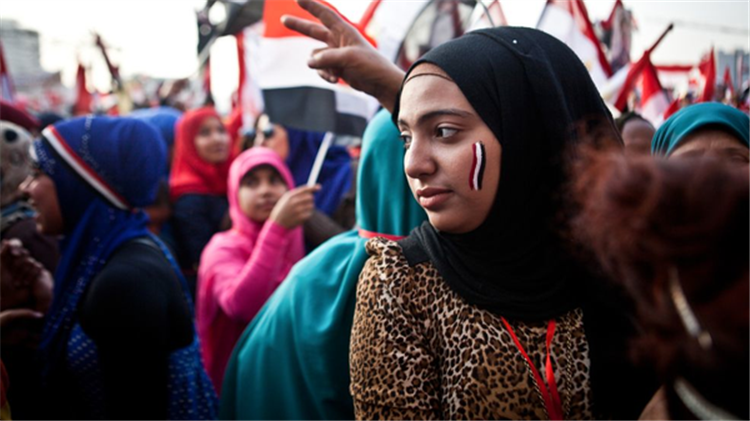|
Will a ‘remove the hijab’ campaign turn heads in Egypt?

The headscarf, or “hijab,” has always been a controversial issue in Egypt, with most clerics saying it is obligatory in Islam, while intellectuals call it a tradition rather than a religious rule.
The controversy intensified with a campaign called “The International Day for Taking Off the Headscarf,” launched in Sept. 2013 by Bahaa Anwar, head of the Secular Party of Egypt and a prominent Egyptian Shiite.
The campaign never took off, but the debate has continued into 2015.
“The headscarf is not obligatory in Islam and it is used by clerics to control women. A piece of cloth cannot possibly determine how religious a woman is,” said Anwar, adding that his party planned to provide counseling for women who are forced to wear the headscarf or want to take it off.
PoliticsMany commentators say taking off the hijab is politically motivated. Psychology professor Rashad Abdel Latif said a year of Muslim Brotherhood rule led youths to associate religion with extremism. “Women took off the headscarf as a statement against extremist ideas promoted by the Brotherhood and other Islamist factions,” he said.
Professor of political sociology Saeid al-Sadeq said the Brotherhood and its supporters tarnished the image of Islam. “Islamists used a violent discourse, and they followed talk about Islamic law with threats of torture and murder,” he said.
Professor of psychology Mohamed Nabil said the Brotherhood was incapable of understanding the nature of the Egyptian people. “They did not realize that Egyptians will be repulsed by the aggressive ways they used to promote Islamic principles, and will never be forced into doing something through such terrorizing acts,” he said. Abdel Latif, Sadeq and Nabil also linked the phenomenon of taking off the hijab to the rise of atheism in Egypt, citing the latter as another consequence of Brotherhood rule.
Journalist Sara Allam linked taking off the headscarf to the rebellious atmosphere that has prevailed since the Jan. 25 revolution that toppled President Hosni Mubarak. “The 2011 revolution reshaped the Egyptian society as rebellion was proven to yield fruits,” she wrote, adding that this specifically affected women who played a major role in toppling the regime and realized they were capable of challenging other taboos.
“Women started reconsidering their position in society, and rebellion extended to the general patriarchal system,” she wrote. “That is when the legend of the veil fell, and women who claimed they were wearing it out of conviction admitted they were victims of a manipulative religious discourse.” Taking off the hijab, Allam said, was no longer the taboo it used to be.
ReligionHowever, Islamist analysts and supporters of the headscarf have focused on religion rather than politics. Safaa Salah al-Din, one of the administrators of preacher Amr Khaled’s website, says many girls wear the hijab without knowing its religious value, either because they are forced by their parents upon puberty, or because religious institutions do not sufficiently raise religious awareness.
Salah al-Din also criticized veiled women who behave in an un-Islamic manner, thus providing a bad example to others. “We cannot only blame the woman who takes off the headscarf, but also the surroundings that did not help her to understand the value of such a step,” she wrote.
Psychologist Amr Abu Khalil blames the clergy’s post-revolution behavior for women’s growing disinterest in wearing the headscarf. “When preachers started getting involved in politics, women no longer found the support they needed to keep the headscarf,” he said. “The same happened with men who became reluctant to marry veiled women, and this encouraged women even more to take off the veil.”
FashionAzza Kurayem, a sociology professor and advisor at the National Center for Social and Criminal Studies, focuses on the social aspect of the phenomenon, as she links the headscarf to fashion trends.
“In the sixties, when liberal ideas were promoted, women wore miniskirts and men had long hair, then it got more conservative in the seventies and eighties and this is when the headscarf started spreading,” she said. Similarly, the hijab “started off strict, then women began wearing tighter and more revealing clothes while keeping the headscarf, until they eventually took it off.”
|
Sonia Farid , Al Arabiya News, 15/01/2015
|
|
|
|
The Mary Initiative
A Bridge of Understanding
Operational, Safety, Security & First Aid Training for NGO's
|
|
|
|